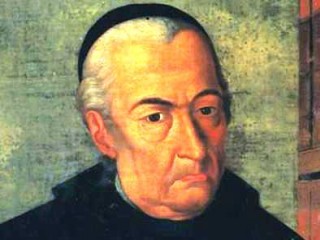
Jose Celestino Mutis biography
Date of birth : 1732-04-06
Date of death : 1808-09-11
Birthplace : Cadiz, Spain
Nationality : Spanish-Colombian
Category : Science and Technology
Last modified : 2011-08-10
Credited as : Naturalist, mathematician, physician
Jose Celestino Mutis was a Spanish-Colombian naturalist, physician, and mathematician. He assembled one of the richest botanical collections in the world of his time.
During the middle and later decades of the 18th century the Spanish government subsidized scientific expeditions and encouraged individuals to determine the natural wealth of its American colonies by the systematic study of their flora and fauna. One of these investigators who won world renown was Jose Celestino Mutis, a descendant of a Majorcan family in the Balearic Islands. He was born in Cadiz, Spain, on April 6, 1732, and spent the last 48 years of his life in Bogota, the capital of viceregal New Granada and the later Republic of Colombia.
After studying medicine and philosophy at the University of Seville and continuing work in the natural sciences and mathematics while teaching anatomy at the University of Madrid, Mutis visited European centers of learning at government expense. These included Stockholm, where he came under the influence of the great Swedish botanist Carolus Linnaeus, who was to pay high tribute to the achievements of his disciple at Bogota.
Appointed the personal physician of the viceroy of New Granada, Pedro Mesia de la Cerda, in 1760, Mutis accompanied this official to Bogota, where for nearly half a century he actively furthered research and the teaching of botany, entomology, medicine, mineralogy, mathematics, and astronomy. He was the first to explain Newton's theories in that part of America, and he successfully defended the doctrine of Copernicus before the Inquisition. He advised viceroys on educational and economic matters while carrying on extensive correspondence with European scholars which brought him membership in the Academy of Science of Paris and of Stockholm.
From 1760 to 1790 Mutis kept a diary of observations on the natural sciences and made contributions in these fields both by original discoveries and by applying new knowledge to the rudimentary economy and medicine practiced in the Spanish American colonies, where he also introduced vaccination. Especially renowned were his studies of quinine (cinchona) and the establishment of its various pharmacological classifications.
Probably Mutis's most remarkable accomplishment was the creation of the Botanical Mission in 1783, a center for collecting and mapping the distribution of every kind of flora and fauna of Colombia; a corps of draftsmen and artists was employed to prepare thousands of colored drawings and large plates of the many species. So beautifully executed were the paintings of this large collection that it excited the unqualified admiration of the great German scientist Alexander von Humboldt, whose years of travel in colonial Spanish America resulted in comprehensive and well-documented works in many volumes that remain indispensable to this day. The herbaria of Mutis's collection are prudently estimated at from 20,000 to 24,000 specimens representing some 5,000 distinct species.
Mutis was ordained a priest in 1774. He died in Bogota on Sept. 11, 1808.
















